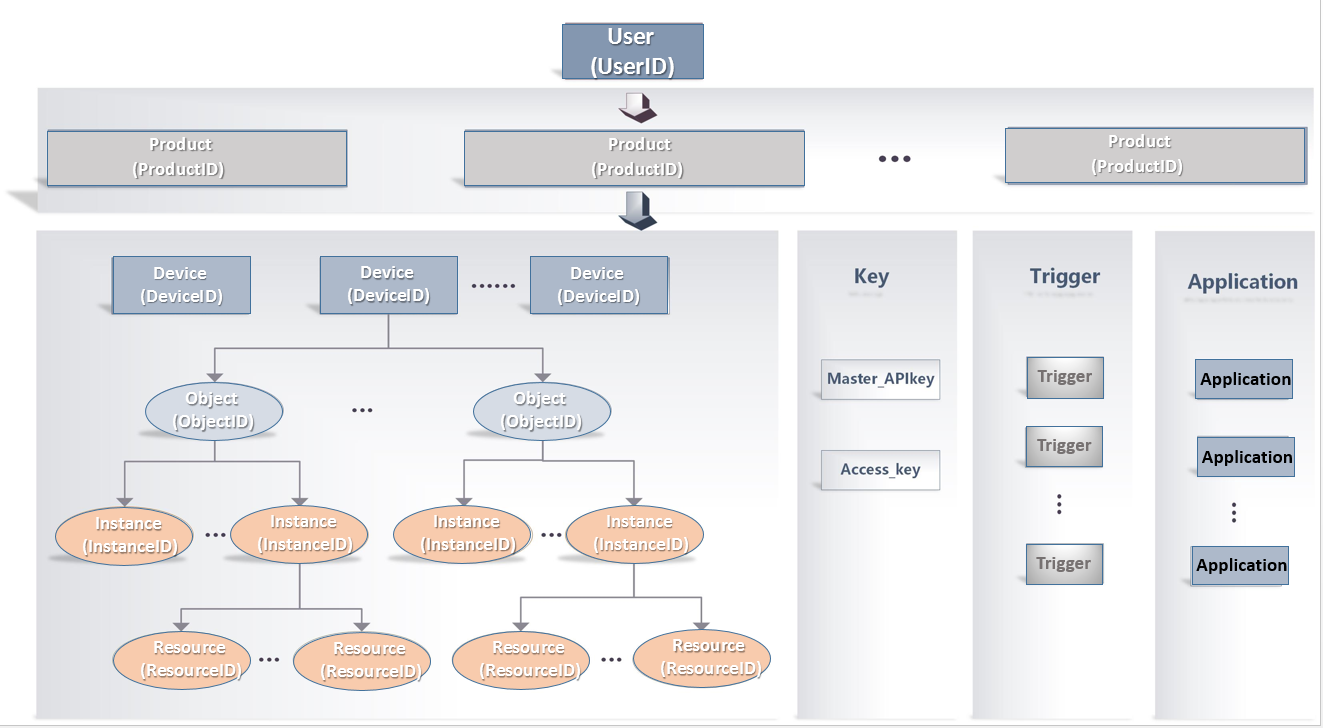
Product resource model
The resource model of OneNET is as follows:

The resource model is an Object/Instance/Resource three-layer structure. The resource model is characterized through numerical coding on the platform.
Note: The numerical coding of the object of self-defined resource can’t be the same as the numerical coding of the object of standardly defined resource. On the premise that the object ID has been defined, there is no restrict to instance ID and resource ID.
Object: represents the type of a sensor
Instance: serial number of the same type of sensors, beginning from “0”, increasing one by one
Resource: description of some properties of the sensor
Example of resource model:

- Product
The user’s maximum resource set is product; the resource under the product includes device, device data, device permission, data triggering service and device data-based application; users can create several products.
- Device
The device is the mapping of a real terminal on the platform. When the real terminal is connected to the platform, the one-to-one correspondence to platform devices should be established. The data uploaded by the terminal is stored in the data stream. The device may involve one or more data streams.
- Resource object
Object is the object specified by IPSO; it defines the sensor type, such as temperature sensor.
- Instance
Instance is the instance specified by IPSO; it defines the specific example of the sensor on the device side, such as temperature sensor 1.
- Property
Resource is the attribute specified by IPSO; it defines the specific sensor attribute on the device side, such as maximum temperature.
- APIkey
APIkey is the cryptographic key for users to invoke API; users must use the corresponding APIkey of the product under This directory when visiting the product resource.
- Trigger
The trigger provides message service under the product directory; it can make a simple logical judgment based on the data stream and trigger HTTP request or email.
- Application
The application editing service supports users to generate simple webpage display applications by dragging controls and associating device data streams.